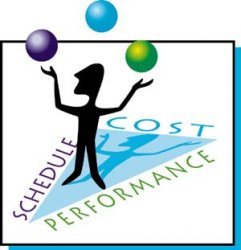A quick google search shows that the medical concept of triage is commonly applied to evaluating IT projects and other major business initiatives. 
The concept of triage comes from medicine, and in particular medical treatment under difficult circumstances—war, epidemic, disaster—where the number of people needing treatment exceeds the resources available. In such situations, the sick or injured are typically assigned to one of three groups.
In the business context, it usually means allocating scarce cash and human capital under difficult economic conditions, when the number of ongoing projects exceeds the level available resources.
Project Triage Framework
In the current economic climate, it probably makes sense to perform a mini-triage of your project portfolio quarterly, with an annual triage as the last fiscal quarter approaches. In addition, you may be faced with the need to triage in emergency situations such as a sudden shift in business strategy, in the face of a new acquisition, or when presented with an across the board budget cut. Periodic review is a cornerstone of an effective project portfolio management strategy. This regular triage can be a valuable form of project insurance. Preventative medicine is always less costly than crisis treatment.
Your triage team should include your senior IT management as well as functional business leadership. Performing project triage is easiest if there is regular, reliable status reporting from the project teams, on their milestone and budget status.
Triage is also easier if your project initiation process includes a business case that assigns a business criticality score to the project. It’s entirely possible that business criticality of a given project might change over the course of the project’s lifecycle, and a master project status tracking document helps the triage team keep track of this.
After reviewing the health of individual projects and their alignment with current business needs, triage will place them into three groups which align perfectly with the medical definition of triage:
1. Persons who are likely to live even if they don’t receive immediate treatment—projects going well that need no additional intervention
2. Persons who are likely to die even if they do receive immediate treatment– projects that you should suspend NOW before they chew up additional resources
3. Persons who are like to live only if they receive immediate treatment– projects that need you to perform an immediate intervention
Our next blog post will cover specific diagnostic tests you must perform on projects that fall into the third group. In the meantime, let us know your apporach to project triage by answering this poll:

Great article. The ability to take a hard look at the status of any project is the hallmark of a good manager. I hope you will also address the importance of communicating with affected project stakeholders, clients, and team members so that everyone learns and moves forward in a positive direction.
Great point, Jill. The communication channels have to be open early, and factored into the triage process and they must continue through the diagnosis and corrective action phases. Facilitating alignment of stakeholders with opposing needs and viewpoints during triage is a key step.
Pingback: Preparing for Project Rescue: Diagnosis « Edgewater Technology Weblog
Pingback: Restoring Projects to Peak Performance « Edgewater Technology Weblog
Pingback: Project Triage During Rapid Business Change Cycles | Edgewater Blog